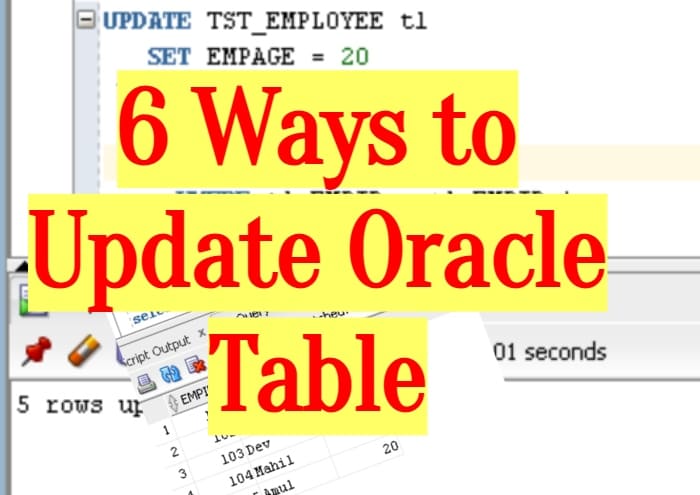In Oracle, table partitioning allows a large table to be broken down into smaller, more manageable pieces called partitions, while still being treated as a
Tag: Oracle
Both Database Clustering and Table Partitioning are advanced techniques to improve performance, scalability, and manageability of databases in Oracle. Each addresses different aspects of database
There are several ways to loop through data in Oracle, here are a few common ones: FOR LOOP Statement: In this example, the FOR loop

Based on our case and the available table data, Oracle updates can occur in a variety of ways. Here are six easy techniques to update
2021-12-06T14:43:04.705157-05:00FMPD(6):WARNING: too many parse errors, count=330 SQL hash=0xx703c089FMPD(6):PARSE ERROR: ospid=6211, error=1795 for statement:FMPD(6):select e_id, e_name from employee where e_id in (:1 ,:2 ,:3 ,:4 ,:5
2022-02-26T15:01:43.693161-06:00 FMPD(6):SELECT CASE WHEN rr.is_enabled = ‘1’ THEN ‘Y’ ELSE ‘N’ END AS ACCESS FROM rag.sources rr WHERE rr.component_id IN (SELECT mc.id FROM rag.lookup_tab mc
The FORALL allows performing the DML operations on data in bulk. It is similar to that of FOR loop statement except in FOR loop things